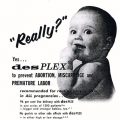A dirty little secret in the world of women’s health – there are relatively few data guiding medical decision-making. Indeed, across all medical specialties the auspices of evidence-based are crumbling quickly in the face of open access and open science. Recent reports suggest less than 50% of all medical treatments have any data to support their efficacy. Of that evidence, much could be suspect given the rampant payments from pharmaceutical and device companies to physicians and other decision-makers, plus the well-documented publishing bias and even fraud plaguing the scientific publishing industry.
In women’s health, matters are even worse. Not only are evidenced-based, clinical practice guidelines nearly non-existent in Ob/Gyn (only 30% of practice guidelines based on data) and women still not included in early stage clinical trials in sufficient numbers, but regulatory agencies do not mandate gender analytics for new medications. The result, post market adverse events – think death and disabling injury – are more common in women than men.
Why do women die and suffer from adverse events at a much higher rate than men? Because most medications reach the market without having ever done the appropriate testing or analytics to distinguish why women might respond to said medications differently than men. Even in the lab, male rodents are used about 90% of the time.
What about medications developed specifically for women? These too are poorly understood, mostly because the outcome variables are not focused on the totality of women’s health. For example, it is important that oral contraceptives prevent pregnancy, but it is equally important that they don’t cause blood clots, stroke, heart attack or cancer. And if blood clots, stroke, heart attack or cancer are deemed acceptable risks for birth control (and I don’t think they are), then shouldn’t we know which pills are the most dangerous and which women are most at risk?
One cannot manage, what one does not measure and we don’t measure critical components of women’s health. We also don’t track adverse events or side-effects very well. Question: have you ever reported a side-effect to a doctor? Do you know if he/she reported it to the FDA, the CDC or any other adverse events registry? Probably not, and that is the problem.
If you knew you had a 20 times higher risk of stroke or heart attack for one medication versus another, would you choose differently? I bet you would, but as medical consumers, we don’t have that information. In many cases, those data don’t exist.
That’s where crowdsourced research comes in. At Lucine, the parent company of Hormones Matter, we think the lack of data in women’s healthcare is unacceptable. We know that the larger companies who sell these products have no motivation to gather or make public these type of data – too many billions of dollars are at stake – and so, it is up to us, the women who need safe health products, to be the change agents.
The simple act of completing surveys on critical topics in women’s health can and will save lives. Your data will tell a story. Add that to the data from hundreds, and hopefully thousands of other women, from all over the world and from all walks of life and we will be able to determine which medications, devices or therapies work, which ones don’t. We can give women the information needed to make informed medical decisions.
We are currently running four women’s health surveys, but plan on running many more. So check back regularly. If you qualify for any or all, take a few minutes and add your data. If you don’t qualify for these, share these surveys with your friends and family through social media. The more data we can gather, the more clear our medication choices will become.
Health Surveys for Real Women
Oral Contraceptives Survey
Oral contraceptives (birth control pills) are used by 98% of the female population at some point in their lives. They are prescribed for a myriad of reasons unrelated to pregnancy prevention. Sometimes they work; sometimes they don’t. Wouldn’t it be nice if we knew which brands of birth control pills worked for which conditions? Better yet, wouldn’t it great if we could avoid the pills that didn’t work, made a particular condition worse or had a higher than average side-effect profile? Take this survey if you have ever used oral contraceptives. Help determine which birth control pills are safest and have the fewest side-effects. You may save another woman’s life and health.
The Hysterectomy Survey
By the age of 60 one in three women will have had a hysterectomy. Hysterectomy is one of the most common surgical procedures for a range of women’s health conditions. For some conditions, hysterectomy works wonders. While, for other conditions it is only nominally successful. The purpose of the hysterectomy survey is to learn more about why hysterectomy works for some women’s health conditions and not others. We’d also like to learn more about the long term health affects of hysterectomy – does a woman who has had a hysterectomy have a higher or lower risk of other health conditions? Take this survey and help improve women’s health.
The Gardasil Cervarix Survey
Women and their physicians need more data about the side-effects of the HPV vaccines, Gardasil and Cervarix. There is a lack of data about who is at risk for adverse events and whether certain pre-existing conditions increase one’s risk for an adverse event. There is also a lack of data about the long term health effects of these vaccines. The purpose of this survey is to fill that data void; to learn more about the risks for, and nature of, adverse events associated with each of the HPV vaccines, Gardasil and Cervarix. Take this survey and help improve women’s health options.
The Lupron Side Effects Survey
Leuprolide, more commonly known as Lupron, is the GnRH agonist prescribed for endometriosis, uterine fibroids or cysts, undiagnosed pelvic pain, precocious puberty, during infertility treatments, and to treat some cancers. It induces a menopause like state stopping menstruation and ovulation. It’s widespread use for pain-related female reproductive disorders such as endometriosis or fibroids is not well supported with very few studies indicating its efficacy in either reducing pain or diagnosing endometriosis or other pelvic pain conditions. Conversely, reports of safety issues are mounting, especially within the patient communities. The Lupron Side Effects Survey was designed to determine the range, rate and severity of side-effects and adverse events associated with Lupron use in women.
All surveys are anonymous and participation is voluntary. More information about individual surveys can be found: Oral Contraceptives Survey, The Hysterectomy Survey, The Gardasil Cervarix HPV Vaccine Survey.
Visit our Take a Health Survey page for new surveys and updates or better yet, sign up to receive our weekly newsletter for all the latest research and hot topics pertaining to women’s health.














